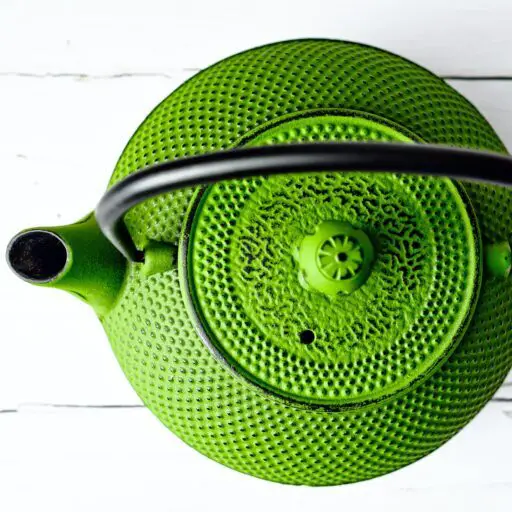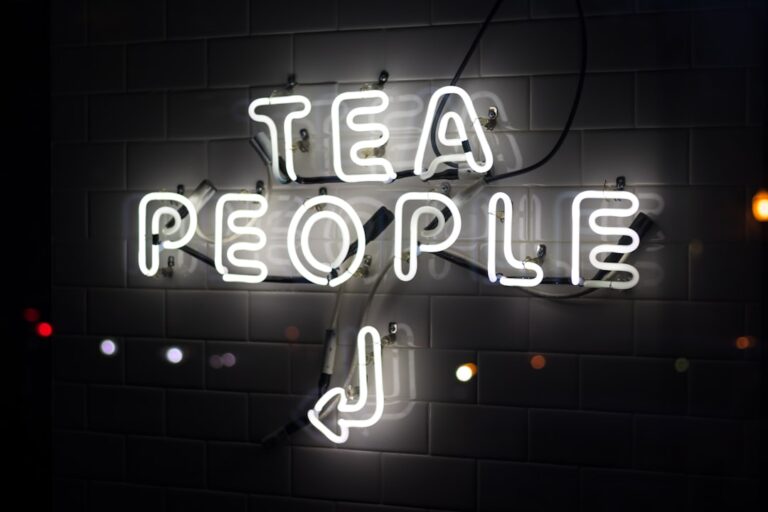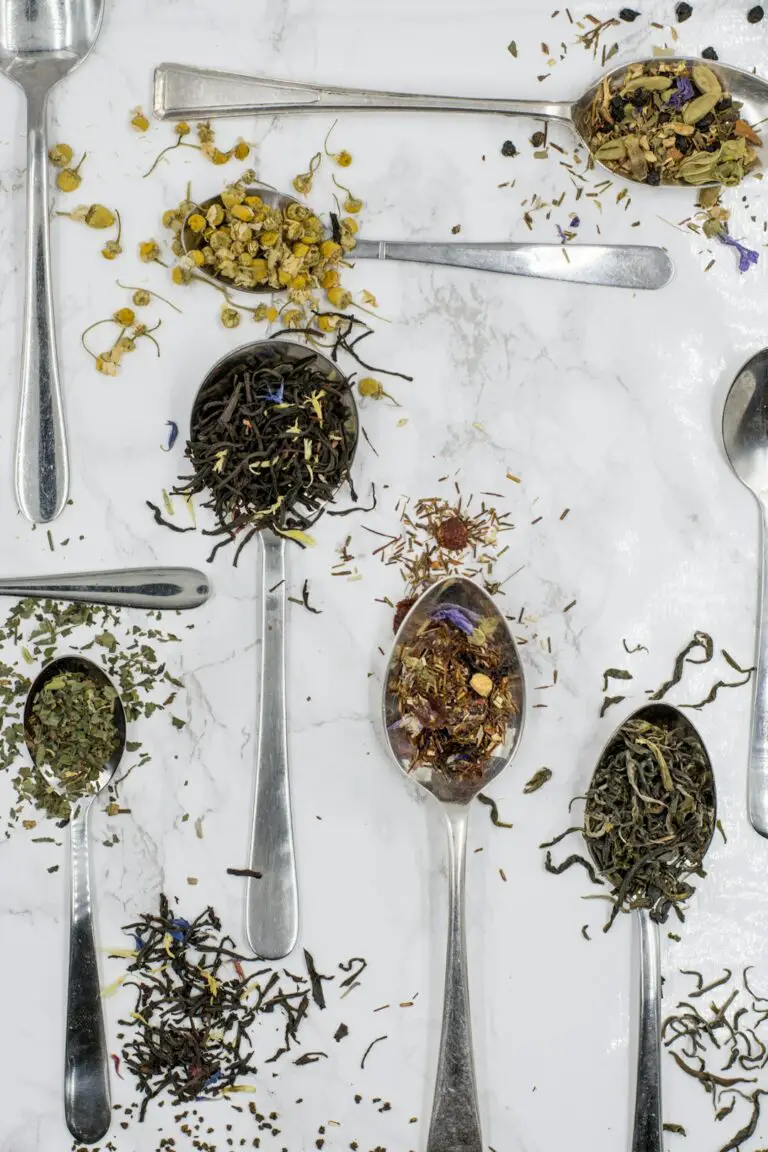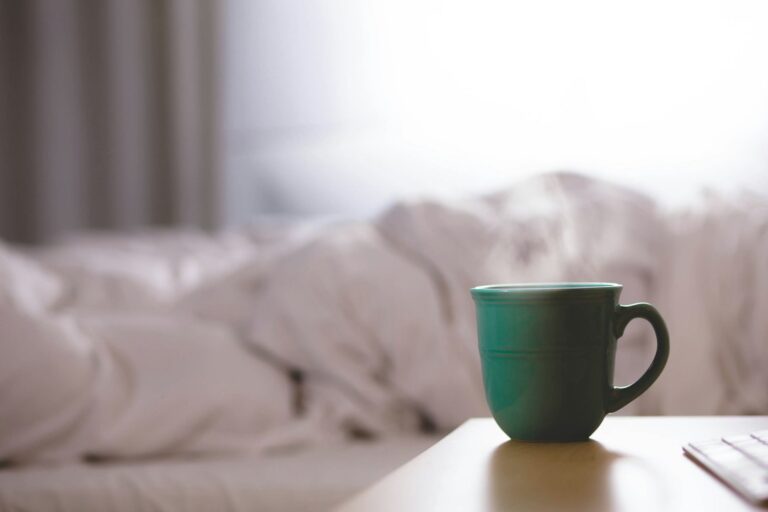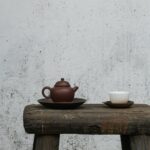Support our educational content for free when you purchase through links on our site. Learn more
Which Type of Tea Is the Best? ☕️ Discover 14 Must-Try Brews (2025)
Tea lovers, gather ’round! If you’ve ever found yourself staring blankly at a tea aisle wondering, “Which type of tea is truly the best?”, you’re not alone. From the delicate whispers of white tea to the bold roar of black tea, and the vibrant world of herbal infusions, the quest for the perfect cup is as personal as it is delicious. Did you know that tea is the world’s second most consumed beverage after water? Yet, with thousands of varieties, picking the “best” can feel like searching for a needle in a haystack.
In this ultimate 2025 guide, we at Tea Brands™ spill the leaves on 14 incredible teas—both true teas from Camellia sinensis and herbal tisanes—that cater to every mood, flavor preference, and wellness goal. Curious about which tea boosts your metabolism? Or which one soothes your soul before bedtime? We’ve got you covered with expert tasting notes, brewing secrets, and health insights. Plus, we’ll reveal some rare gems like yellow tea and pu-erh that might just become your new favorites.
Ready to embark on a flavorful adventure? Let’s steep into the details and find your personal tea champion!
Key Takeaways
- “Best” tea is personal: It depends on your taste, caffeine needs, and health goals.
- 14 teas explored: From green and black to chamomile and rooibos, each with unique flavors and benefits.
- Health perks vary: Green tea for antioxidants, hibiscus for heart health, chamomile for relaxation, and more.
- Brewing matters: Proper water temperature and steeping time unlock the best flavor.
- Sustainability counts: Choose organic and fair-trade teas for ethical sipping.
👉 Shop Top Tea Picks:
- Green Tea: Ito En | Harney & Sons
- Black Tea: Twinings | Taylors of Harrogate
- Herbal Teas: Traditional Medicinals | Numi Organic
- Oolong & Specialty: Harney & Sons Oolong | Vahdam Teas
Table of Contents
- ⚡️ Quick Tips and Facts: Your Tea Journey Starts Here
- 📜 The Ancient Brew: A Brief History of Tea’s Global Domination
- 🤔 What Makes a Tea “The Best”? Our Expert Criteria for Your Perfect Cup
- 🌿 The Six True Teas: A Deep Dive into Camellia Sinensis Varieties
- 🌸 Beyond the Leaf: Exploring Herbal Infusions (Tisanes) for Every Mood and Wellness Goal
- ⚖️ Caffeine Content Unveiled: Your Guide to Tea’s Energy Levels and When to Sip
- 🌡️ The Art of the Perfect Brew: Temperature, Time, and Tools for Optimal Flavor
- 💪 Health Benefits Galore: Which Tea Supports Your Wellness Goals?
- 🌍 Sourcing & Sustainability: Making Ethical and Eco-Friendly Tea Choices
- 🛒 How to Choose Your “Best” Tea: A Personalized Approach to Your Daily Ritual
- ✅❌ Quick Do’s and Don’ts for Tea Enthusiasts: Elevate Your Experience
- 💡 Conclusion: The “Best” Tea is Yours to Discover!
- 🔗 Recommended Links: Dive Deeper into the World of Tea
- ❓ FAQ: Your Most Pressing Tea Questions Answered
- 📚 Reference Links: Our Trusted Sources
Here is the main body of the article, crafted according to your detailed instructions.
⚡️ Quick Tips and Facts: Your Tea Journey Starts Here
In a hurry? We get it. Sometimes you just need the tea, literally. Here are the essential sips of wisdom to get you started on finding the best type of tea for you.
- “True Tea” vs. “Herbal Tea”: All “true” teas (black, green, white, oolong, pu-erh, yellow) come from one magical plant: Camellia sinensis. The difference is all in the processing! Herbal teas (or tisanes) are made from other plants like flowers, roots, and spices, and are naturally caffeine-free.
- “Best” is Personal: The “best” tea is the one that suits your taste buds, your mood, and your wellness goals. Are you seeking an energy boost or a sleepy-time brew? A bold flavor or a delicate note?
- Green is the “Champ”: If you’re looking for overall health benefits, green tea is often hailed as the winner. As dietitian Beth Czerwony, RD, told the Cleveland Clinic, it’s the “Swiss Army knife of teas” thanks to its high antioxidant content.
- Brewing Matters: Don’t scorch your leaves! Water temperature and steeping time are crucial. Using water that’s too hot on green or white tea will make it bitter.
- Loose Leaf > Bags (Usually): For the richest flavor and aroma, loose-leaf tea often provides a superior experience because the leaves have more room to expand and infuse.
- Caffeine Varies Wildly: Black tea generally has the most caffeine, followed by oolong, green, and white. Herbal teas are your go-to for a zero-caffeine option.
📜 The Ancient Brew: A Brief History of Tea’s Global Domination
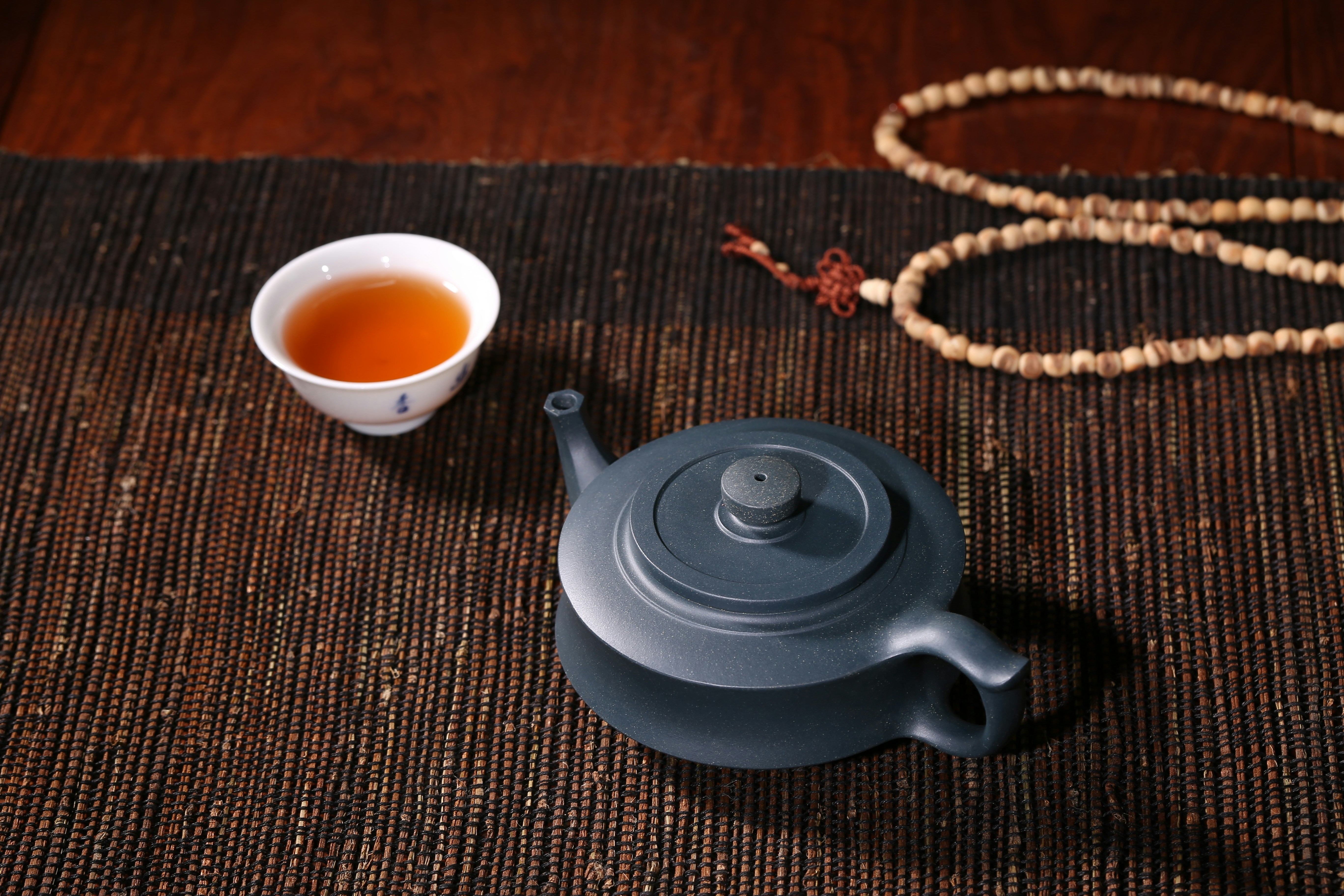
Ever wonder how a simple leaf conquered the world? The story of tea is a sprawling epic of emperors, monks, spies, and revolutions. Legend has it that in 2737 B.C., Chinese Emperor Shen Nung was boiling water when leaves from a wild tea tree blew into his pot. He was intrigued by the pleasant aroma of the resulting brew, drank some, and—voilà!—tea was born.
For centuries, tea was a closely guarded secret in China, used as a medicinal elixir and a status symbol. Buddhist monks, who used it to stay awake during long meditations, helped spread its popularity. It journeyed along the Silk Road and eventually, in the 17th century, it captivated Europe, becoming the fashionable drink of choice in English high society (thanks, Catherine of Braganza!).
From the Boston Tea Party, which helped spark the American Revolution, to the British cultivation of tea in India to break China’s monopoly, this humble beverage has been at the center of global trade and culture for millennia. Today, it’s the second most consumed drink in the world after water. Not bad for a humble leaf, eh?
🤔 What Makes a Tea “The Best”? Our Expert Criteria for Your Perfect Cup
So, you’ve asked the million-dollar question: “Which type of tea is the best?” Here at Tea Brands™, we get this all the time. And our answer? It’s like asking, “What’s the best song?” The answer depends entirely on you!
The “best” tea isn’t a single, universal champion. It’s a personal discovery. To guide you, we’ve broken down what “best” can mean into four key areas. Think of this as your personal tea compass.
H3: Flavor Profile & Aroma
Are you a fan of bold, malty, and robust flavors, like a classic English Breakfast? Or do you prefer something light, grassy, and floral, like a Japanese Sencha? Maybe you’re in the mood for something spicy and warming like a ginger tisane, or sweet and tart like hibiscus. The sensory experience—from the smell of the dry leaves to the final taste on your palate—is paramount.
H3: Desired Effect & Caffeine Level
What do you want your tea to do for you?
- Morning Kickstart: A high-caffeine black tea is your best friend.
- Afternoon Focus: The L-theanine and moderate caffeine in green tea can provide calm alertness.
- Evening Wind-Down: A caffeine-free chamomile or lavender tea is perfect for relaxing.
- Post-Meal Soother: Peppermint or ginger tea can aid digestion.
H3: Health & Wellness Goals
Tea is packed with beneficial compounds. As noted by Health.com, different teas are “imbued with antioxidants that reduce the risk of diseases.” Are you looking to:
- Boost your immune system?
- Support heart health?
- Aid in weight management?
- Reduce inflammation?
We’ll dive into which teas are best for these goals later on. For a deeper look, check out our guides on the Health Benefits of Tea.
H3: Occasion & Ritual
Are you brewing a quick cup in a travel mug on your way to work? Or are you settling in for a cozy weekend ritual with your favorite teapot and a good book? The context matters. Some teas are quick and easy, while others, like a complex oolong, invite a more mindful, ceremonial preparation.
So, the real question isn’t “What’s the best tea?” but “What’s the best tea for me, right now?” Let’s find out!
🌿 The Six True Teas: A Deep Dive into Camellia Sinensis Varieties
Welcome to the main event! These six teas are the “true” teas, all born from the Camellia sinensis plant. The incredible diversity in their flavor, color, and aroma comes down to one thing: oxidation. This is the process where the tea leaves are exposed to air, causing them to darken and their chemical composition to change. Let’s meet the family.
1. 💚 Green Tea: The Verdant Elixir for Focus and Freshness
Green tea is the unoxidized superstar of the tea world. To prevent oxidation, the leaves are quickly heated after harvesting—either by pan-firing (common in China) or steaming (common in Japan). This locks in their vibrant green color and fresh, grassy flavor profile. It’s also why green tea is packed with powerful antioxidants called catechins, especially EGCG (epigallocatechin gallate). If you’re wondering Is Tazo Green Tea Good for Weight Loss? 7 Expert Tips (2025) 🍵, its catechin content is a key reason for its potential benefits.
- Flavor Profile: Ranges from sweet and vegetal (Dragon Well) to grassy and savory/umami (Sencha) to toasty and nutty (Genmaicha).
- Key Benefits:
- ✅ Brain Function: The combination of caffeine and the amino acid L-theanine creates a state of “calm alertness,” improving focus without the jitters of coffee.
- ✅ Metabolism Support: EGCG has been studied for its potential to aid in weight management and boost metabolism.
- ✅ Antioxidant Powerhouse: Fights cellular damage from free radicals, supporting overall health.
- Our Tasters Say: “A good Japanese Sencha is my go-to for beating the 3 PM slump. It’s like a clean, green reset button for my brain. Just be sure not to brew it with boiling water—you’ll kill the delicate flavor and make it bitter. Aim for around 175°F (80°C).”
- Top Brands to Try:
- Ito En: Amazon | Walmart | Ito En Official Website
- Harney & Sons: Amazon | Walmart | Harney & Sons Official Website
2. 🖤 Black Tea: The Bold Classic for Energy and Comfort
If green tea is fresh and vibrant, black tea is its bold, robust, and fully oxidized older sibling. This is the tea most of the Western world grew up on—think English Breakfast, Earl Grey, and Darjeeling. During oxidation, the catechins convert into theaflavins and thearubigins, which give black tea its dark color, rich flavor, and unique health benefits.
- Flavor Profile: Can be malty, brisk, and full-bodied (Assam), or floral, fruity, and complex (Darjeeling). Often has notes of honey, caramel, or dried fruit.
- Key Benefits:
- ✅ Energy Boost: Typically has the highest caffeine content of the true teas.
- ✅ Heart Health: Theaflavins may help support healthy cholesterol and blood pressure levels.
- ✅ Gut Health: May promote the growth of good gut bacteria.
- Our Tasters Say: “There’s nothing like a strong cup of Assam to get the day started. It’s a hug in a mug, especially with a splash of milk. For a real treat, try a ‘second flush’ Darjeeling—it has this incredible muscatel grape note you won’t find anywhere else.” Explore more in our Tea Brand Spotlights.
- Top Brands to Try:
- Twinings: Amazon | Walmart | Twinings Official Website
- Taylors of Harrogate: Amazon | Walmart
3. ⚪ White Tea: The Delicate Whisper of Purity and Antioxidants
White tea is the most minimally processed of all teas. It’s made from the youngest, most tender buds and leaves of the tea plant, which are often still covered in fine, white hairs—hence the name. The leaves are simply harvested and withered to dry, with no rolling or oxidation. This gentle process preserves a high level of antioxidants.
- Flavor Profile: Extremely delicate, subtle, and nuanced. Often described as having notes of melon, apricot, and honey with a silky, smooth finish.
- Key Benefits:
- ✅ Highest in Antioxidants: Because it’s so unprocessed, it’s thought to retain the most antioxidants.
- ✅ Gentle on the Palate: Perfect for those who find green or black teas too strong.
- ✅ Low Caffeine: Contains less caffeine than green or black tea, making it a great afternoon or evening choice.
- Our Tasters Say: “Drinking a high-quality Silver Needle white tea is a meditative experience. It’s so subtle that you really have to pay attention. It forces you to slow down. It’s the definition of affordable luxury.”
- Top Brands to Try:
- Vahdam Teas: Amazon | Vahdam Official Website
- The Tao of Tea: Amazon | The Tao of Tea Official Website
4. 🤎 Oolong Tea: The Enigmatic Bridge Between Green and Black
Oolong is the most complex and diverse category of tea. It’s partially oxidized, sitting somewhere on the spectrum between green and black tea. The oxidation level can range from as little as 10% (closer to a green tea) to as much as 80% (closer to a black tea). This creates an incredible array of flavors and aromas.
- Flavor Profile: Can be light, green, and floral (like Tie Guan Yin or “Iron Goddess of Mercy”) or dark, roasted, and fruity (like Da Hong Pao or “Big Red Robe”).
- Key Benefits:
- ✅ Metabolism Support: Like green tea, it’s often associated with supporting a healthy metabolism.
- ✅ Heart Health: Studies suggest it may be beneficial for heart health.
- ✅ Complex Flavors: Offers the best of both worlds—the freshness of green tea and the complexity of black tea.
- Our Tasters Say: “Oolong is the wine of the tea world. A good one can be re-steeped multiple times, with the flavor evolving with each infusion. It’s a journey in a cup. If you’re new to it, a creamy, floral Milk Oolong is a fantastic place to start.” Find your favorite in our Tea Brand Guides.
- Top Brands to Try:
- Harney & Sons: Amazon | Walmart | Harney & Sons Official Website
- Teavivre: Amazon | Teavivre Official Website
5. 💛 Yellow Tea: The Rare Gem of Subtle Sweetness and Mellow Notes
Yellow tea is the rarest of the six true tea types. Its processing is similar to green tea, but with an added step: sweltering or “sealed yellowing.” After an initial heating, the warm, damp leaves are wrapped in cloth or paper, which causes a slight, slow, non-enzymatic oxidation. This mellows out the grassy notes of green tea and creates a uniquely smooth, sweet, and less astringent brew.
- Flavor Profile: Smooth, mellow, and sweet with notes of honey, corn silk, and toasted rice. It lacks the sharpness or bitterness that can sometimes be found in green tea.
- Key Benefits:
- ✅ Gentle Digestion: Known for being very gentle on the stomach.
- ✅ Rich in Antioxidants: Similar antioxidant profile to green tea but with a different flavor experience.
- ✅ Unique & Rare: A special treat for any tea connoisseur.
- Our Tasters Say: “Finding a true yellow tea is like finding a hidden treasure. It’s what I drink when I want the benefits of green tea without any of the vegetal bite. It’s pure, smooth comfort.”
- Top Brands to Try:
- Teavivre: Amazon | Teavivre Official Website
- Seven Cups Fine Chinese Teas: Seven Cups Official Website
6. 🔴 Pu-erh Tea: The Fermented Marvel for Digestion and Depth
Pu-erh (or Pu’er) is a post-fermented tea from Yunnan province, China. Unlike other teas where oxidation is stopped, Pu-erh is aged, allowing microbes to ferment the leaves over time. It’s often pressed into cakes, bricks, or other shapes. There are two types: Sheng (raw), which ages naturally over years, and Shou (ripe), which undergoes an accelerated fermentation process.
- Flavor Profile: Deep, rich, and earthy. Shou Pu-erh has notes of dark chocolate, damp earth, and mushroom. Sheng Pu-erh can be more complex, with notes of camphor, stone fruit, and wood, becoming smoother with age.
- Key Benefits:
- ✅ Digestive Aid: Famously consumed after heavy meals to aid digestion and cut through richness.
- ✅ Probiotic Properties: The fermentation process introduces beneficial microbes.
- ✅ Ages Like Fine Wine: High-quality Sheng Pu-erh can increase in value and complexity over decades.
- Our Tasters Say: “Shou Pu-erh is my secret weapon after a big, greasy dinner. It just settles everything down. It’s an acquired taste for sure—very earthy—but once you get it, you’re hooked. It’s the most grounding tea I know.”
- Top Brands to Try:
- Numi Organic Tea: Amazon | Walmart | Numi Official Website
- White2Tea: White2Tea Official Website (specialist vendor)
🌸 Beyond the Leaf: Exploring Herbal Infusions (Tisanes) for Every Mood and Wellness Goal
Now we venture beyond the Camellia sinensis plant into the vast and vibrant world of Herbal Tea! Technically called tisanes, these infusions are made from flowers, fruits, herbs, spices, and roots. They are naturally caffeine-free and offer a kaleidoscope of flavors and targeted wellness benefits. As Harvard Health notes, they have been used as “natural remedies for a variety of ailments for centuries.”
7. 🍃 Peppermint Tea: The Refreshing Soother for Digestion and Clarity
This isn’t just for freshening your breath! Made from the leaves of the Mentha piperita plant, peppermint tea is a powerful and refreshing brew. The key component, menthol, is responsible for its cooling sensation and many of its benefits.
- Flavor Profile: Bright, cooling, sharp, and intensely minty.
- Key Benefits:
- ✅ Digestive Superstar: Excellent for soothing an upset stomach, reducing bloating, and relieving indigestion. The Cleveland Clinic notes it’s great for issues “lower in your gut.”
- ✅ Congestion Relief: The menthol acts as a natural decongestant, helping to clear sinuses.
- ✅ Headache Helper: Can help relax muscles and ease tension headaches.
- Our Tasters Say: “I always have peppermint tea on hand for after dinner. It’s like a reset button for my digestive system. It’s also fantastic iced on a hot day—so refreshing!”
- Top Brands to Try:
- Traditional Medicinals: Amazon | Walmart | Traditional Medicinals Official Website
- Tazo: Amazon | Walmart
8. 🌼 Chamomile Tea: The Calming Embrace for Restful Nights and Stress Relief
Made from the daisy-like flowers of the chamomile plant, this tisane is the undisputed king of calming teas. It contains an antioxidant called apigenin, which binds to specific receptors in your brain that may decrease anxiety and initiate sleep.
- Flavor Profile: Gentle, floral, and slightly sweet with an apple-like aroma.
- Key Benefits:
- ✅ Promotes Sleep: Famously used to combat insomnia and improve sleep quality. As Beth Czerwony, RD, puts it, “Chamomile basically acts as a mild tranquilizer.”
- ✅ Reduces Stress & Anxiety: Its calming properties make it perfect for unwinding after a long day.
- ✅ Soothes Menstrual Pain: Some studies suggest it can help reduce the severity of menstrual cramps.
- Our Tasters Say: “My bedtime ritual is non-negotiable: a warm cup of chamomile, a good book, and no screens. It’s the most reliable way I’ve found to quiet my racing mind and drift off to sleep.”
- Top Brands to Try:
9. 🧡 Rooibos Tea: The Caffeine-Free Red Bush Wonder from South Africa
Hailing exclusively from the Cederberg region of South Africa, rooibos (pronounced “roy-boss”) is made from the fermented leaves of the Aspalathus linearis shrub. It has a beautiful reddish-brown color and is naturally sweet and caffeine-free.
- Flavor Profile: Smooth, sweet, and slightly nutty with notes of vanilla and honey. It’s never bitter.
- Key Benefits:
- ✅ Rich in Antioxidants: Contains unique antioxidants like aspalathin and quercetin.
- ✅ Caffeine-Free Alternative to Black Tea: Its robust flavor makes it a great substitute for black tea, especially in the evening.
- ✅ Bone & Heart Health: Some research suggests it may support bone and cardiovascular health.
- Our Tasters Say: “Rooibos is my go-to for making caffeine-free iced tea. It’s naturally sweet, so you don’t need to add any sugar. A squeeze of lemon makes it perfect. It’s also delicious as a ‘Red Latte’ with steamed milk and a dash of cinnamon.”
- Top Brands to Try:
- Numi Organic Tea: Amazon | Walmart
- The Republic of Tea: Amazon | The Republic of Tea Official Website
10. 🌺 Hibiscus Tea: The Tart & Tangy Heart-Healthy Brew with a Vibrant Hue
Brewed from the dried calyces of the Hibiscus sabdariffa flower, this tea is known for its stunning ruby-red color and mouth-puckeringly tart flavor, similar to cranberry. It’s packed with antioxidants, including vitamin C and anthocyanins.
- Flavor Profile: Tart, tangy, and fruity. Often sweetened with honey or sugar to balance the tartness.
- Key Benefits:
- ✅ Supports Healthy Blood Pressure: Multiple studies, including those cited by Harvard Health, have shown hibiscus tea may help lower blood pressure.
- ✅ Rich in Vitamin C: A great choice for supporting the immune system.
- ✅ Liver Health: May promote liver health by increasing drug-detoxifying enzymes.
- Our Tasters Say: “I love making a big pitcher of iced hibiscus tea, or ‘Agua de Jamaica,’ in the summer. I mix it with a bit of lime juice and agave. It’s incredibly refreshing and the color is just gorgeous.”
- Top Brands to Try:
11. 🌶️ Ginger Tea: The Warming Zinger for Wellness and Digestive Comfort
This spicy, invigorating brew is made by steeping fresh or dried ginger root. Its power comes from gingerol, a bioactive compound with potent anti-inflammatory and antioxidant effects. It’s a go-to remedy for a reason!
- Flavor Profile: Pungent, spicy, and warming with a slightly sweet finish.
- Key Benefits:
- ✅ Nausea Relief: Famously effective against nausea, from motion sickness to morning sickness.
- ✅ Anti-Inflammatory: Helps combat inflammation, which can soothe sore muscles and joint pain.
- ✅ Digestive Aid: The Cleveland Clinic names it the best tea for gut health, as it helps relax the gut and speed up digestion.
- Our Tasters Say: “The second I feel a tickle in my throat, I start brewing ginger tea with lemon and honey. It’s a wellness triple-threat. The warming sensation is instantly comforting.”
- Top Brands to Try:
- Yogi Tea: Amazon | Walmart
- Pukka Herbs: Amazon | Pukka Herbs Official Website
12. 🌱 Dandelion Tea: The Detoxifying Root for Renewal and Liver Support
Don’t pull that weed! Dandelion is a nutritional powerhouse. Tea can be made from the roasted root (which has a coffee-like flavor) or from the leaves and flowers. It’s packed with vitamins and minerals and has been used for centuries as a natural diuretic.
- Flavor Profile: Roasted root tea is rich, toasty, and slightly bitter. Leaf tea is more delicate and earthy.
- Key Benefits:
- ✅ Liver & Kidney Support: Acts as a diuretic, helping the body flush out toxins and supporting kidney function.
- ✅ Rich in Nutrients: A good source of vitamins A, C, and K, as well as potassium.
- ✅ Aids Digestion: Can stimulate appetite and help soothe minor digestive ailments.
- Our Tasters Say: “When I’m feeling sluggish or after a weekend of indulgence, a cup of roasted dandelion root tea feels like a gentle detox. It’s a surprisingly satisfying coffee substitute.”
- Top Brands to Try:
13. 💜 Lavender Tea: The Aromatic Stress Reliever for Serenity and Sleep
Made from the fresh or dried buds of the Lavandula angustifolia plant, lavender tea is aromatherapy in a cup. Its famous scent is known to have a calming effect on the nervous system, making it a wonderful addition to any relaxation routine.
- Flavor Profile: Sweet, floral, and fragrant with notes of mint and rosemary.
- Key Benefits:
- ✅ Reduces Anxiety: The aroma alone can help lower stress levels and promote a sense of calm.
- ✅ Improves Sleep: Often blended with chamomile to create a powerful sleep-inducing brew.
- ✅ Soothes the Soul: The ritual of sipping this fragrant tea is inherently relaxing.
- Our Tasters Say: “A little lavender goes a long way! I love a blend like ‘Calm’ or ‘Sleepytime’ that uses lavender as a key note. It feels like a spa treatment for my brain before bed.”
- Top Brands to Try:
- The Republic of Tea: Amazon
- Buddha Teas: Amazon | Buddha Teas Official Website
14. 🍎 Fruit & Spice Blends: The Flavorful Fun of Tisanes for Every Palate
This is the “anything goes” category of the tisane world! These are creative and delicious Specialty Blends that mix dried fruits, spices, and herbs to create unique flavor experiences. Think apple-cinnamon, lemon-ginger, or berry-hibiscus.
- Flavor Profile: Endless possibilities! Sweet, spicy, tart, fruity, and everything in between.
- Key Benefits:
- ✅ Flavorful & Caffeine-Free: A great way to hydrate and enjoy a tasty beverage without caffeine or added sugar.
- ✅ Kid-Friendly: Many fruit blends are naturally sweet and a healthy alternative to juice.
- ✅ Creative & Fun: The perfect way to experiment and find a flavor combination you love.
- Our Tasters Say: “I love a good spiced apple chai blend in the fall. It’s like a warm slice of apple pie in a mug. These blends are all about pure enjoyment and comfort.”
- Top Brands to Try:
⚖️ Caffeine Content Unveiled: Your Guide to Tea’s Energy Levels and When to Sip
“Does it have caffeine?” is one of the first questions people ask. The answer is… it’s complicated! The caffeine in a cup of tea depends on the type of tea, leaf size, water temperature, and steeping time. But don’t worry, we’ve created this handy chart to give you a general idea.
| Tea Type | Average Caffeine (per 8 oz cup) | Best Time to Sip |
|---|---|---|
| Black Tea | 40-70 mg | ☀️ Morning: The perfect coffee replacement to start your day. |
| Pu-erh Tea | 30-70 mg | ☀️ Morning / 🍽️ After Meals: Energizing and great for digestion. |
| Oolong Tea | 30-50 mg | 🌤️ Afternoon: A balanced pick-me-up that won’t cause jitters. |
| Green Tea | 20-45 mg | 🌤️ Afternoon: Ideal for focus and calm alertness. |
| Yellow Tea | 15-30 mg | 🌤️ Afternoon / 🌙 Evening: A gentle lift with a smooth finish. |
| White Tea | 15-30 mg | 🌤️ Afternoon / 🌙 Evening: Very low caffeine, great for a delicate treat. |
| Herbal Teas | 0 mg | 🌙 Anytime/Bedtime: Completely caffeine-free for relaxation. |
Key Takeaway: If you’re sensitive to caffeine, stick to white, yellow, or herbal teas in the afternoon and evening. If you need a serious jolt, black or pu-erh tea is your best bet.
🌡️ The Art of the Perfect Brew: Temperature, Time, and Tools for Optimal Flavor
You’ve chosen your tea—congratulations! Now, don’t ruin it with bad brewing. Using the right water temperature and steeping time is the single most important thing you can do to unlock your tea’s true flavor. Using boiling water on a delicate green tea is a cardinal sin—it will scorch the leaves and turn your beautiful brew into a bitter mess.
Follow this guide from our tasting lab for a perfect cup, every time.
| Tea Type | Water Temperature | Steeping Time | Pro Tip from Our Tasters |
|---|---|---|---|
| White Tea | 160-175°F (70-80°C) | 1-3 minutes | Use water just steaming, not bubbling. Delicate leaves need a gentle touch. |
| Yellow Tea | 170-175°F (75-80°C) | 1-3 minutes | Similar to green tea, but even more forgiving. Avoid boiling water at all costs. |
| Green Tea | 175-185°F (80-85°C) | 1-3 minutes | If you don’t have a temp-control kettle, let boiling water sit for 2-3 minutes before pouring. |
| Oolong Tea | 185-205°F (85-96°C) | 2-5 minutes | Can be re-steeped multiple times. Add 30-60 seconds for each subsequent infusion. |
| Black Tea | 200-212°F (93-100°C) | 3-5 minutes | These robust leaves can handle a full, rolling boil. Don’t over-steep or it will become astringent. |
| Pu-erh Tea | 212°F (100°C) | 30s – 4 min | Give it a quick 5-10 second “rinse” with hot water first to awaken the leaves. |
| Herbal Teas | 212°F (100°C) | 5-10 minutes | These are hardy! A full boil and a long steep will extract the most flavor and benefits. |
Essential Tools for the Perfect Brew:
- Variable Temperature Kettle: The best investment a tea lover can make. Brands like Bonavita or Cuisinart are fantastic.
- Tea Infuser: A basket-style infuser gives loose leaves plenty of room to expand. Avoid the small, novelty “tea ball” types.
- A Favorite Mug: This is non-negotiable. Tea just tastes better from a mug you love.
💪 Health Benefits Galore: Which Tea Supports Your Wellness Goals?
Okay, let’s get practical. You want to know which tea to drink for what. While all “true teas” are rich in health-promoting polyphenols, and many herbals have specific medicinal properties, we can match certain teas to common wellness goals.
Immunity Boosters & Antioxidant Powerhouses
When you feel a cold coming on or just want to support your body’s defenses.
- Green Tea: The EGCG champ for overall antioxidant support.
- Hibiscus Tea: Loaded with Vitamin C.
- Ginger Tea: Anti-inflammatory and immune-boosting properties.
- Elderberry Tea: A traditional remedy for colds and flu.
Digestive Aids & Gut Health Heroes
For after a heavy meal or when your tummy feels off.
- Peppermint Tea: Relieves bloating and indigestion.
- Ginger Tea: Combats nausea and speeds up digestion.
- Pu-erh Tea: The ultimate post-meal digestive.
- Chamomile Tea: Can help soothe stomach cramps.
Stress Reducers & Sleep Inducers
For winding down, quieting the mind, and getting a good night’s rest.
- Chamomile Tea: The classic “sleepy-time” tea.
- Lavender Tea: Aromatherapeutic and calming.
- Lemon Balm Tea: Known to reduce stress and anxiety.
- Valerian Root Tea: A potent herbal sedative for serious sleep support.
Heart Health & Blood Pressure Support
For long-term cardiovascular wellness.
- Hibiscus Tea: Famously studied for its ability to help lower blood pressure.
- Black Tea: Its theaflavins may help support healthy cholesterol levels.
- Green Tea: Linked to numerous cardiovascular benefits.
- Oolong Tea: May also contribute to heart health.
Weight Management & Metabolism Boosters
To support a healthy lifestyle and fitness goals.
- Green Tea: Catechins may help boost metabolism and fat oxidation.
- Oolong Tea: Also contains compounds that can support metabolic function.
- Pu-erh Tea: May help reduce fat accumulation.
Disclaimer: While tea can be a wonderful part of a healthy lifestyle, it is not a substitute for medical advice or treatment. Always consult your doctor, especially if you have a health condition or are pregnant.
🌍 Sourcing & Sustainability: Making Ethical and Eco-Friendly Tea Choices
Where your tea comes from matters—not just for flavor, but for the planet and the people who grow it. When you’re choosing a tea, look for these certifications on the packaging to make a more conscious choice.
- USDA Organic: Ensures the tea was grown without synthetic pesticides, fertilizers, or GMOs. This is better for your body and the environment.
- Fair Trade Certified™: Guarantees that the farmers and workers who produced the tea received fair wages and work in safe conditions. It helps build sustainable communities.
- Rainforest Alliance Certified™: Focuses on biodiversity conservation, sustainable livelihoods, and human rights. The little frog seal means it’s a product that supports a healthier planet.
Brands We Admire for Their Commitment:
- Numi Organic Tea: A B-Corp that is both Organic and Fair Trade Certified.
- Traditional Medicinals: Champions organic farming and ethical sourcing for their herbal teas.
- Vahdam Teas: A certified climate-neutral and plastic-neutral brand that sources directly from Indian tea gardens.
Choosing sustainable tea means you’re not just getting a great cup; you’re voting with your wallet for a better world.
🛒 How to Choose Your “Best” Tea: A Personalized Approach to Your Daily Ritual
We’ve thrown a lot of information at you! Now it’s time to put it all together and find your perfect tea. Here’s a simple, step-by-step process our team uses when recommending teas.
Consider Your Mood & Time of Day
- Morning (6-10 AM): Need to wake up and get going?
- ✅ Go for: High-caffeine Black Tea (English Breakfast) or Pu-erh.
- Afternoon (1-4 PM): Hitting a slump and need focus?
- ✅ Go for: Mid-caffeine Green Tea or Oolong Tea.
- Evening (7-10 PM): Time to relax and unwind?
- ✅ Go for: Caffeine-free Chamomile, Rooibos, or Peppermint Tea.
Explore Flavor Profiles & Aroma Notes
What tastes do you generally enjoy?
- If you like coffee: You’ll probably enjoy the robust, malty, or earthy notes of Black Tea or Shou Pu-erh.
- If you like light, fresh flavors: You’ll love the grassy, vegetal, or floral notes of Green Tea and White Tea.
- If you like wine or craft beer: The complexity of Oolong Tea will fascinate you.
- If you like sweet & fruity drinks: Try a Hibiscus or Berry blend.
- If you like spicy flavors: Ginger Tea or a Masala Chai is for you.
Match with Health Goals & Dietary Needs
Refer back to our Health Benefits section. Are you looking for digestive support? Stress relief? An antioxidant boost? Let your wellness goals guide your choice.
Experiment Fearlessly! Our Top Recommendations
The best way to find your favorite is to taste, taste, taste! Don’t be afraid to try something new. Here are our team’s “desert island” picks to get you started:
- For the Newcomer: Twinings English Breakfast. It’s a classic for a reason. Balanced, smooth, and takes milk well.
- For the Adventurous: Harney & Sons Tie Guan Yin Oolong. It’s a beautiful introduction to the floral, complex world of oolongs.
- For the Health-Conscious: Traditional Medicinals Organic Peppermint. Pure, potent, and incredibly soothing for digestion.
- For the Caffeine-Averse: Numi Organic Rooibos. Naturally sweet, full-bodied, and perfect any time of day.
✅❌ Quick Do’s and Don’ts for Tea Enthusiasts: Elevate Your Experience
Here are some rapid-fire tips to make every cup better.
- ✅ DO use fresh, filtered water. Your tea is 99% water, so quality matters!
- ❌ DON’T use boiling water for green or white teas. You’ll make them bitter.
- ✅ DO pre-warm your mug or teapot with a splash of hot water. It keeps your tea hot longer.
- ❌ DON’T squeeze your tea bag against the side of the mug. It releases bitter tannins. Just lift it out.
- ✅ DO store your tea in an airtight, opaque container away from heat, light, and strong smells (like coffee or spices).
- ❌ DON’T be afraid to try a tea without milk or sugar first. You might be surprised by its natural flavor!
- ✅ DO experiment with steeping times. A little longer or shorter can make a big difference.
- ❌ DON’T re-boil water in your kettle. It reduces the oxygen content and can make your tea taste flat.
💡 Conclusion: The “Best” Tea is Yours to Discover!
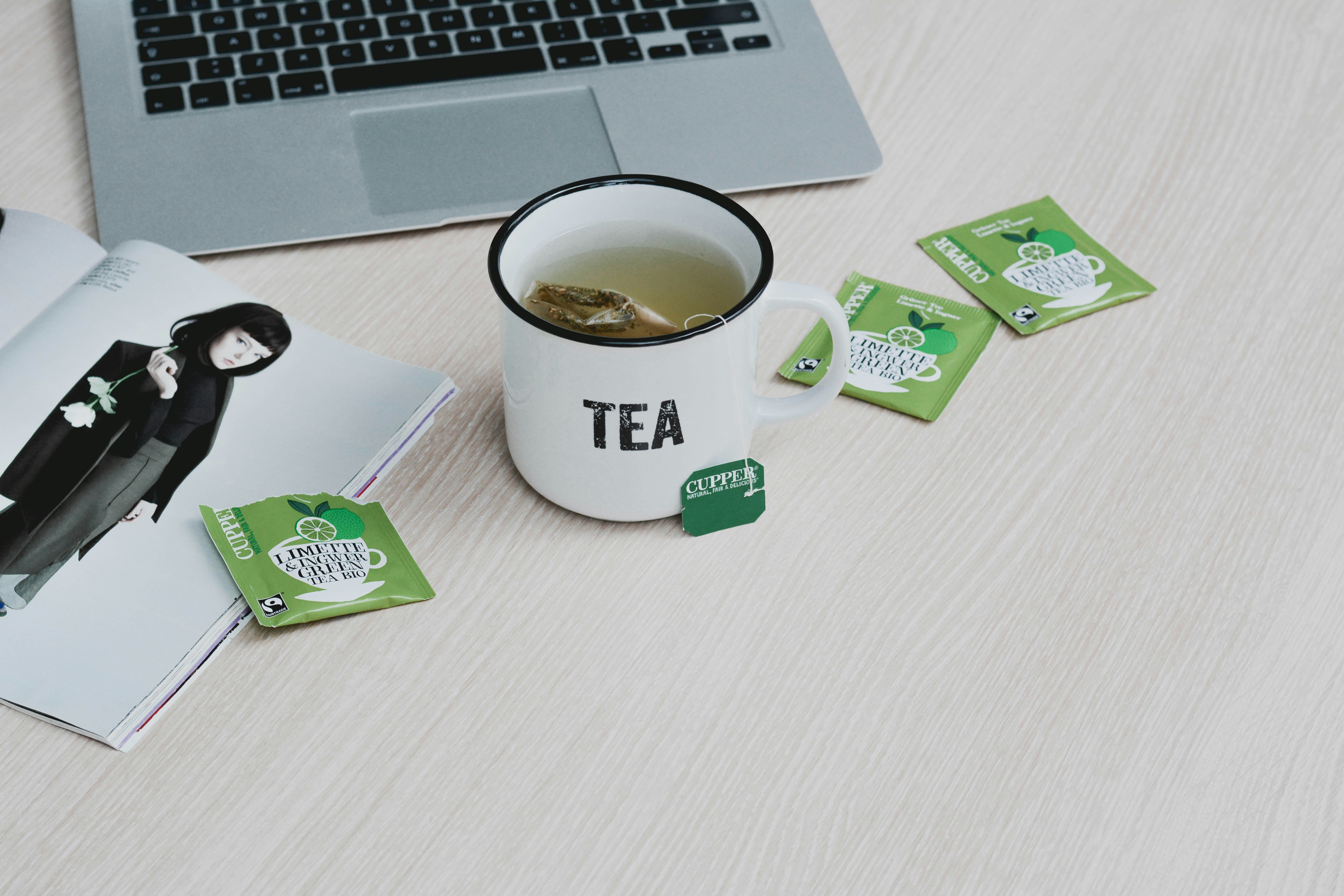
Phew! What a journey through the lush, fragrant world of tea we’ve taken together. From the verdant hills where Camellia sinensis leaves are plucked to the aromatic herbal infusions that soothe and delight, we’ve uncovered the rich tapestry of flavors, health benefits, and rituals that make tea one of the most beloved beverages on Earth.
Remember, the question “Which type of tea is the best?” doesn’t have a one-size-fits-all answer. The best tea is the one that fits your taste, your mood, and your wellness needs. Whether it’s the antioxidant-packed green tea that sharpens your focus, the robust black tea that fuels your mornings, or the calming chamomile that lulls you to sleep, your perfect cup is waiting to be discovered.
We hope our expert insights, tasting notes, and practical tips have empowered you to explore confidently and find your personal tea champion. So go ahead—brew that next cup with intention, savor every sip, and enjoy the simple yet profound pleasure that only a perfect cup of tea can bring. ☕️✨
🔗 Recommended Links: Dive Deeper into the World of Tea
Ready to start your tea adventure or expand your collection? Here are some of our top picks from trusted brands and resources to get you brewing like a pro.
Shop Our Favorite Tea Brands & Products
- Ito En Green Tea: Amazon | Walmart | Ito En Official Website
- Harney & Sons Green & Oolong Teas: Amazon | Walmart | Harney & Sons Official Website
- Twinings Black Tea: Amazon | Walmart | Twinings Official Website
- Traditional Medicinals Herbal Teas (Peppermint, Chamomile, Hibiscus): Amazon | Walmart | Traditional Medicinals Official Website
- Numi Organic Rooibos & Pu-erh: Amazon | Walmart | Numi Official Website
- Vahdam White Tea: Amazon | Vahdam Official Website
- Yogi Ginger Tea: Amazon | Walmart
- Celestial Seasonings Herbal Blends: Amazon | Walmart
Must-Read Books for Tea Lovers
- The Tea Enthusiast’s Handbook: A Guide to Enjoying the World’s Best Teas by Mary Lou Heiss & Robert J. Heiss
Amazon Link - The Story of Tea: A Cultural History and Drinking Guide by Mary Lou Heiss & Robert J. Heiss
Amazon Link - Tea: History, Terroirs, Varieties by Kevin Gascoyne, François Marchand, et al.
Amazon Link
❓ FAQ: Your Most Pressing Tea Questions Answered
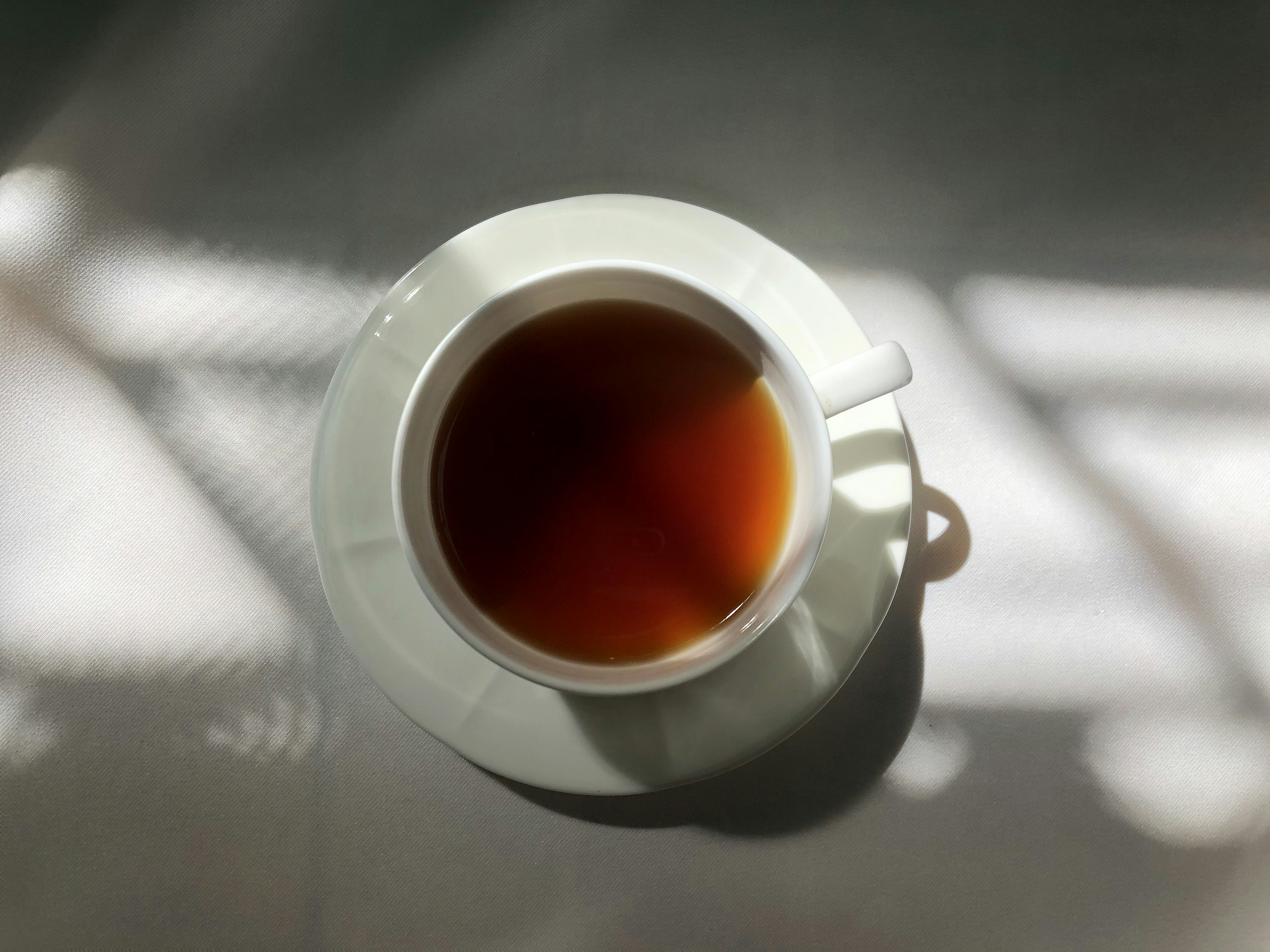
What are the most popular types of tea for beginners to try?
For beginners, we recommend starting with approachable, versatile teas that showcase classic flavors without overwhelming complexity:
- English Breakfast Black Tea: Robust, familiar, and great with milk or sugar.
- Sencha Green Tea: Fresh, grassy, and a gentle introduction to green teas.
- Chamomile Herbal Tea: Caffeine-free and calming, perfect for evenings.
- Peppermint Herbal Tea: Refreshing and soothing for digestion.
- Oolong Tea (Milk Oolong): Smooth and slightly creamy, a gentle step into more complex teas.
Starting here lets you explore a range of flavors and caffeine levels while building your palate.
Read more about “Which Is the Best Tea to Buy? ☕️ Top 15 Picks for 2025”
How does the quality of tea leaves impact the flavor and aroma of brewed tea?
The quality of tea leaves profoundly affects the final cup. High-quality teas typically use whole, young leaves or buds harvested at peak freshness, often handpicked, and processed carefully to preserve delicate compounds.
- Whole Leaf vs. Broken Leaves: Whole leaves retain more essential oils and complex flavors, resulting in a richer, more nuanced brew. Broken leaves or fannings (common in tea bags) release flavor quickly but can taste flat or bitter.
- Freshness: Tea loses flavor and aroma over time due to oxidation and moisture exposure. Freshly harvested and properly stored teas offer brighter, more vibrant profiles.
- Processing: Skilled processing (e.g., precise oxidation, firing) enhances desirable flavors and reduces bitterness or astringency.
Our tasters always recommend investing in good-quality loose-leaf teas for the best experience.
Are there any specific health benefits associated with drinking certain types of tea?
Absolutely! Different teas contain unique compounds that support various aspects of health:
- Green Tea: Rich in catechins (especially EGCG), supports metabolism, brain function, and heart health.
- Black Tea: Contains theaflavins and thearubigins, which may help lower cholesterol and improve gut health.
- Chamomile: Contains apigenin, promoting relaxation and better sleep.
- Ginger Tea: Anti-inflammatory and effective against nausea.
- Hibiscus Tea: May help lower blood pressure and support cardiovascular health.
- Rooibos: Antioxidant-rich and caffeine-free, good for stress relief.
Remember, tea complements a healthy lifestyle but is not a cure-all.
What are the key differences between black, green, white, and oolong tea in terms of taste and production?
- Black Tea: Fully oxidized leaves, resulting in dark color and bold, malty flavors. Highest caffeine among true teas.
- Green Tea: Unoxidized, leaves are quickly heated to preserve green color and fresh, grassy flavors. Moderate caffeine.
- White Tea: Minimally processed, made from young buds and leaves, very delicate and subtle flavor with low caffeine.
- Oolong Tea: Partially oxidized (10-80%), bridging green and black teas with a wide flavor range from floral to roasted.
Each type offers a unique sensory and health profile shaped by its processing.
How can I brew the perfect cup of tea at home?
Brewing the perfect cup involves controlling three main factors:
- Water Temperature: Use lower temperatures for delicate teas (white, green, yellow) and boiling water for robust teas (black, pu-erh, herbal).
- Steeping Time: Oversteeping can cause bitterness; understeeping may yield weak flavor. Follow recommended times for each tea type.
- Tea Quantity: Generally, use 1 teaspoon of loose leaf per 8 oz cup, but adjust to taste.
Investing in a variable temperature kettle and a good infuser can make a world of difference.
Read more about “Top 10 Tea Brands USA Bottled You Must Try in 2025 🍵”
Can herbal teas replace traditional teas for health benefits?
Herbal teas (tisanes) offer unique benefits distinct from true teas because they come from different plants. While they are caffeine-free and often used for specific health purposes (e.g., chamomile for sleep, ginger for digestion), they lack the polyphenols found in Camellia sinensis teas.
Herbal teas are excellent complements but not replacements if you seek the antioxidant benefits of true teas. Always check for potential allergies or interactions with medications.
Read more about “Is Tazo Green Tea Good for Weight Loss? 7 Expert Tips (2025) 🍵”
📚 Reference Links: Our Trusted Sources
- Harvard Health Publishing, The health benefits of 3 herbal teas
https://www.health.harvard.edu/nutrition/the-health-benefits-of-3-herbal-teas - Health.com, Types of Tea and Their Health Benefits
https://www.health.com/types-of-tea-8619678 - Cleveland Clinic, Teas for Health: Which Ones Are Best?
https://health.clevelandclinic.org/teas-for-health - Ito En Official Website
https://www.itoen.com/ - Harney & Sons Official Website
https://www.harney.com/ - Twinings Official Website
https://twiningsusa.com/ - Traditional Medicinals Official Website
https://www.traditionalmedicinals.com/ - Numi Organic Tea Official Website
https://numitea.com/ - Vahdam Teas Official Website
https://www.vahdam.com/ - Pukka Herbs Official Website
https://www.pukkaherbs.com/uk/en/ - The Republic of Tea Official Website
https://www.republicoftea.com/ - Buddha Teas Official Website
https://www.buddhateas.com/
Enjoy your tea adventures! 🍵✨
